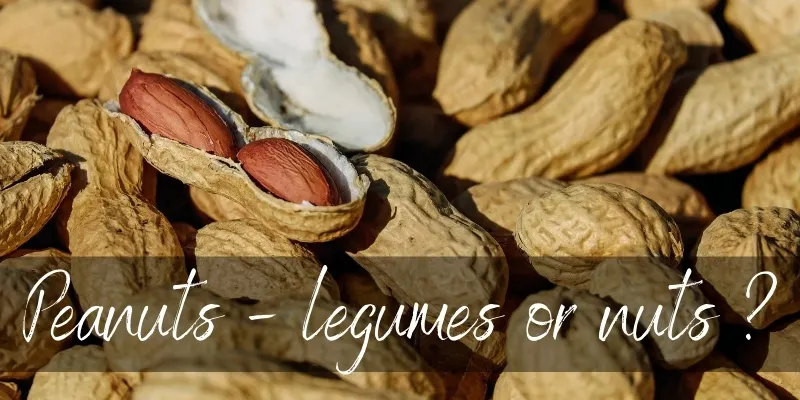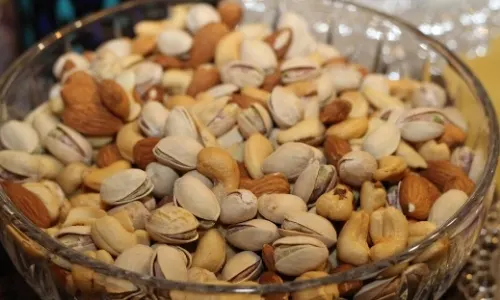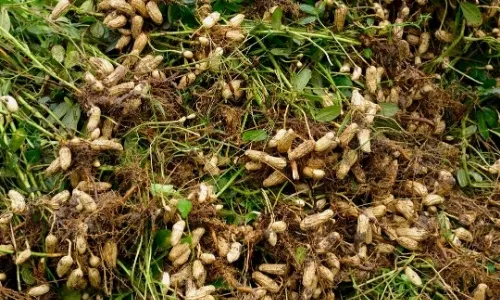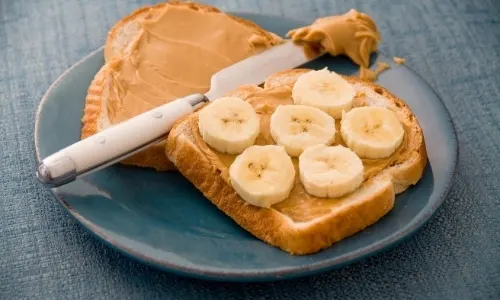Peanuts are an amazing source of non-animal protein, and definitely a very common snack for many folks.
Whether you’re allergic to peanuts or not, you may be interested to find out if they really are nuts or not.
As it happens, the truth is a bit weird. Like with other food items, it seems peanuts have been hiding something from us all.

Are peanuts legumes or nuts ?
Peanuts are classified as legumes, not nuts. Due to their structure, they are considered legumes from a botanical point of view. Like other legumes, peanuts have a symbiotic nitrogen-fixing bacteria in their root nodules.
They also grow in a pod, two and sometimes three at a time.
By contrast, a nut is a seed that is immediately surrounded by a very hard outer shell, and kept snugly in this shell.
Peanut shells are much softer and do not hold the seeds tight.
Read Also:Why Are Walnuts Bitter ?
Culinary VS botanical nuts
Despite all this, in everyday life peanuts are considered nuts. This also applies to those who are allergic to nuts, as that allergy includes peanuts.
There is a difference between botanical nuts and culinary nuts, in that culinary terms are usually more lax.

Botanical terms are very strict and may exclude some food items from a list because they don’t meet specific requirements.
For example peanuts are legumes, but are the only ones that grown under the ground.
This separates them from any other legumes and makes it easy to forget they’re on the list.
As for nuts, culinary nuts may sometimes include seeds, especially when cooking.
In short, science says peanuts are legumes. But in everyday use, they are considered nuts and are treated as such.
Peanuts are used for crop rotation
A very important aspect of peanuts is their nitrogen-fixing roots.
This is a key feature, because it helps restore nutrients in the ground and you’ll notice this in other crops.
For example when growing rice, sometimes the Azolla plant is planted as a companion.
It fixes nitrogen into the water, feeding the rice stalks.
Similarly, peanut roots fix nitrogen into the surrounding soil. This helps fertilize the soil for the crop that will follow.
When growing any sort of crop, most nutrients are absorbed into the crop, depleting the soil.

This is where legume crops come in, helping the soil restore its nutrients. This is why it’s also referred to as a rotation crop.
Every few seasons, or every other season, legumes are planted to help the soil restore.
Where the name peanut came from
Alright, if peanuts aren’t nuts why are they called peaNUTS ? Well, the funny thing is the name may be derived from a very simple comparison.
It’s as small as a pea (maybe a bit bigger), but it tastes like a nut. Hence, peanut !
Now, there is no scientific evidence behind this claim, just something that’s been passed down for generations.
But it sure sounds like it could be the case, doesn’t it ?
Other names for peanuts are goober, goober nut, monkey nut, and perhaps the most apt one ground nut. As in, it’s a ‘nut’, and it grows in the ground.
A few interesting peanut facts
Now that we’ve settled that peanuts aren’t nuts, but are legumes, let’s talk about some more interesting peanut facts.
Peanuts are the only ‘nuts’ not in a tree
A very interesting thing about peanuts, they’re the only culinary nut that doesn’t grow in a tree.
Actually they grow underground, and are harvested by pulling them up like carrots.
Where every nut in the botanical sense grows on a tree, the peanut disagrees.
Almonds, walnuts, cashews, pecans, and other nuts all grow on trees.
Peanuts are expensive due to import tax
Despite peanuts being grown in many areas of the world, the demand is greater than the offer.
Meaning that America and Europe are the biggest peanut consumers, but are not the main producers.
The biggest crops are in China and India, which is where most supermarket peanuts are from.
This all means that peanuts are imported, and heavy taxes are applied to said import.

Read Also:Why Do Donuts Have Holes ?
America’s love for peanut butter started in WWII
As peanuts are a main ingredient in peanut butter, you’ll note that no conversation about peanuts remains about peanuts.
A topic that has made every non-American wonder ‘why, though ?’, the love for peanut butter started ages ago.
In short, back in WWII era food shortages were common, including protein and meat.
Peanuts were abundant in America at the time, and peanut butter was definitely a thing but it was very niche.
But it was soon turned into an alternative protein source, being good for pretty much everything from sandwiches to pies to savory foods.
It’s been an American staple ever since, and especially after sugar was added to most of the production.

